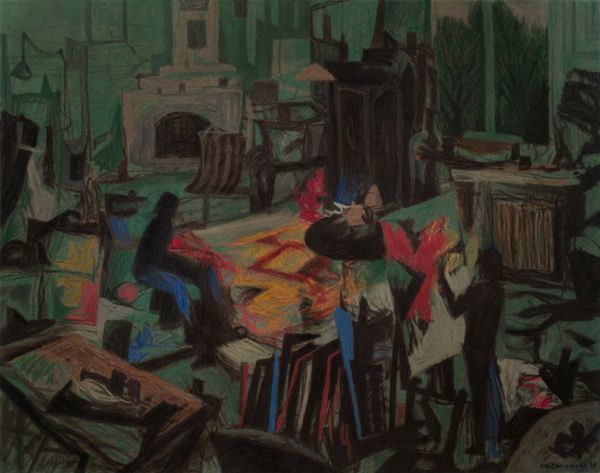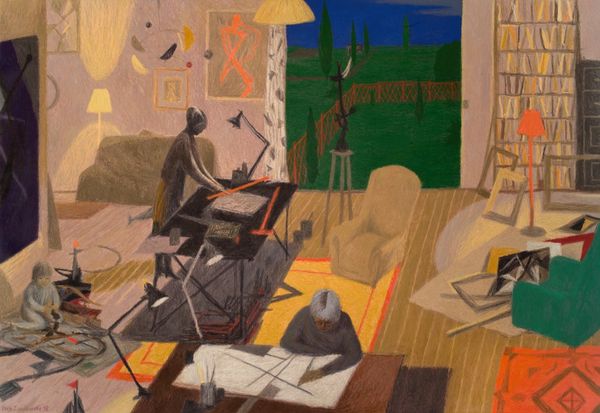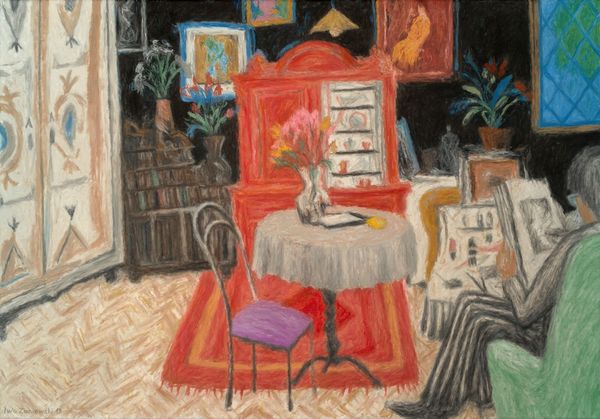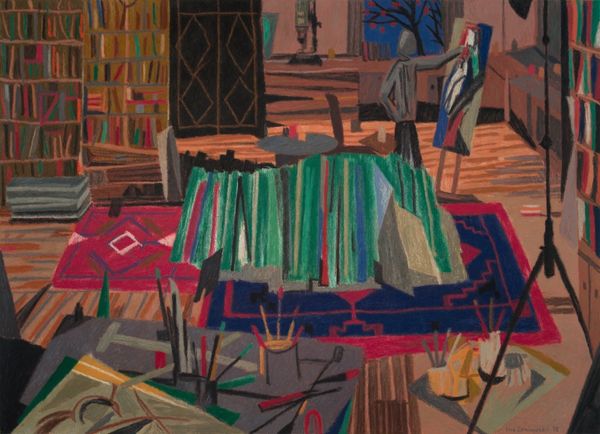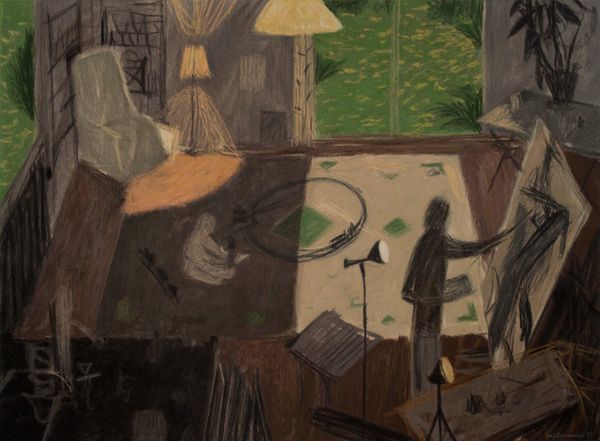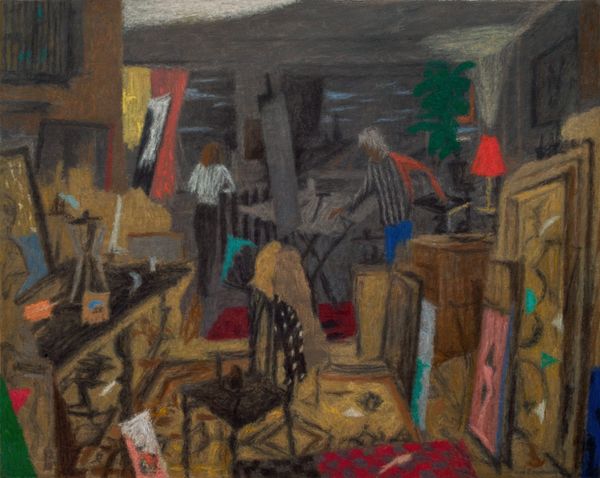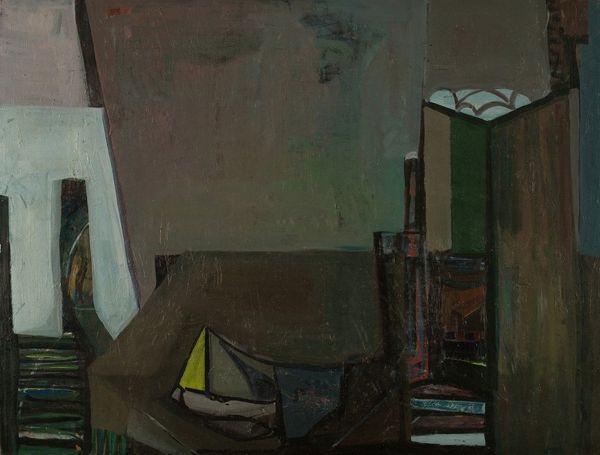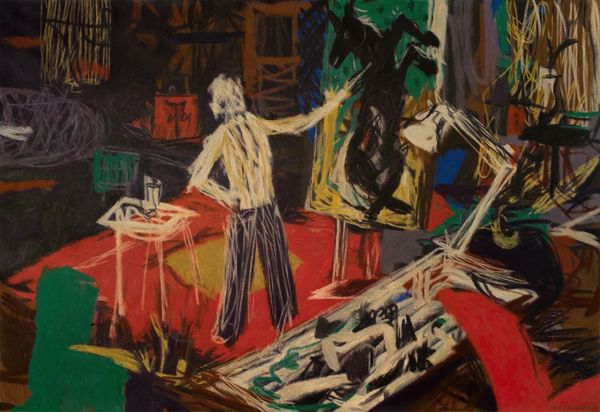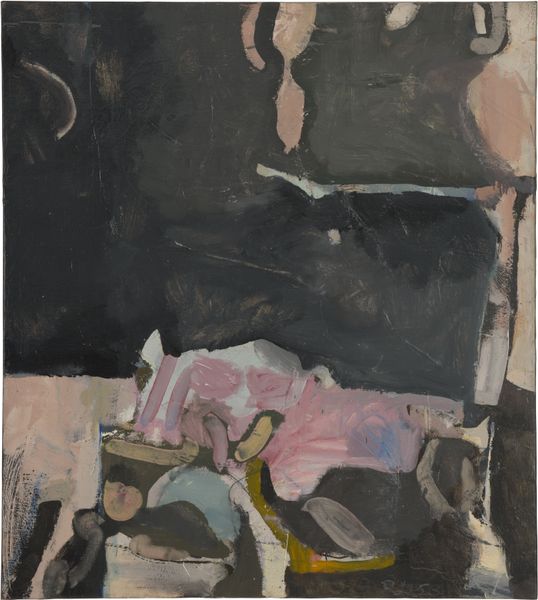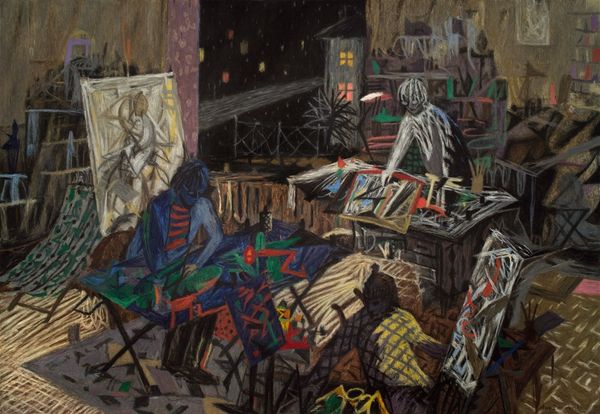
painting, oil-paint, impasto
#
portrait
#
narrative-art
#
painting
#
oil-paint
#
landscape
#
figuration
#
impasto
#
expressionism
#
cityscape
Copyright: Modern Artists: Artvee
Curator: Here we have Iwo Zaniewski's “Studio with a View,” an oil painting offering a peek into the artist’s creative space. Editor: My first impression is of a controlled chaos. There’s a strong emphasis on the geometry of the room, yet the layering and impasto give it this wonderfully textured and almost turbulent surface. Curator: Exactly. The depiction of the studio speaks volumes about the artistic life. We see the influence of the urban environment just outside those dark windows. The paintings leaning against the wall could also reference Zaniewski’s cultural and artistic inspirations, from portraiture to landscape. It suggests art is always in conversation with the wider world. Editor: The interior space definitely feels separate. The cool darkness of the city at night is strongly contrasted with the warm reds, yellows, and blues of the room’s interior. I wonder if the chromatic contrast creates an echo in the opposition between geometric order and painterly application? Curator: Possibly. I see this piece reflecting a tension that many artists face—the solitude and quiet contemplation in the studio versus their engagement with social realities and other works. And notice how Zaniewski includes a cat: it makes this almost a secularized domestic interior, almost like something from the early Renaissance! Editor: True. The way the composition directs your eye toward the figure hunched over their desk definitely centralizes a narrative about creativity and introspection. What’s curious, though, is how his face isn’t clearly defined and we only see him from behind; he's a mere shape. Curator: Yes, he merges into his workspace, highlighting the dedication to one's craft that is not very different from pre-modern artist's devotion to god! Ultimately, the painting blurs boundaries—between interior and exterior, order and chaos, the personal and the universal. Editor: Agreed, and the textured impasto reinforces that blurring by never letting the colors settle—even as geometric constraints suggest organization. Thank you for pointing out the tensions at play here, the analysis of cultural production helps makes better sense of the brushstrokes!
Comments
No comments
Be the first to comment and join the conversation on the ultimate creative platform.
